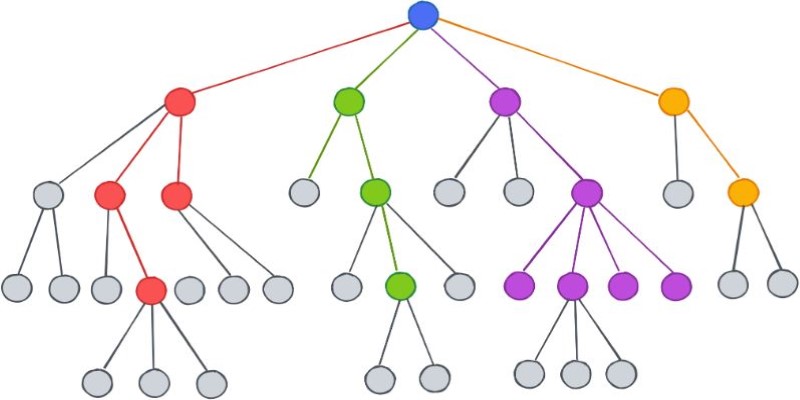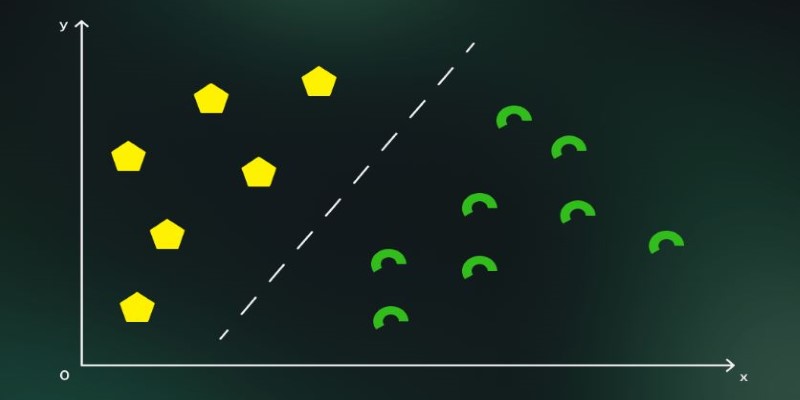Artificial intelligence has reshaped the way machines interpret and classify data. At the heart of this transformation are machine learning models, each designed to solve specific problems in unique ways. Two widely used models, Support Vector Machines (SVM) and Decision Trees, take fundamentally different approaches to classification and prediction. While SVM focuses on drawing clear boundaries between data points, Decision Trees rely on a step-by-step approach to reach conclusions.
The decision among these algorithms relies on aspects including data complexity, interpretability, and computational cost. Knowledge of the difference between SVM and Decision Trees facilitates the selection of an appropriate model for a particular AI task.
Understanding Support Vector Machines (SVM)
Support Vector Machines (SVM) are robust supervised learning algorithms applied to both classification and regression problems. They operate by identifying the best boundary, or "hyperplane," which differentiates various classes of data. The hyperplane seeks to achieve the maximum margin between data points of varying categories so as to have the smallest number of classification errors. The higher the margin, the better the model at generalizing new data.
One of SVM's virtues is its capability in dealing with high-dimensional data. When the points are spread in complicated patterns, SVM can also function well by transforming the data into a higher-dimensional space with a method called the "kernel trick." This converts the data so that classification is much simpler, which is why SVM is very useful for complicated tasks like image recognition, text classification, and bioinformatics.
SVM can support both linear and non-linear classification problems. If data are linearly separable, SVM just plots a straight hyperplane to separate the classes. Yet for more complex data distributions, kernel functions such as polynomial, radial basis function (RBF), and sigmoid are applied to modify the boundary and facilitate the model's better separation of the data.
However, SVM has its own set of limitations. It can be computationally intensive, particularly when dealing with big data. The optimization process needed to train an SVM model requires a lot of processing power and memory, making it not very practical for real-time applications with big data.
Understanding Decision Trees
Decision Trees, on the other hand, approach classification in a more intuitive way. Instead of relying on a mathematical boundary like SVM, Decision Trees split data based on a series of simple, easy-to-understand rules. The model begins at the root node and evaluates specific features, branching out based on conditions like "Is the temperature above 30°C?" This process continues until the tree reaches a final prediction, making it simple to understand how decisions are made.

One of the major advantages of Decision Trees is their interpretability. This feature makes them ideal for applications where transparency is crucial, such as in business decision-making or healthcare. Unlike SVM, which involves complex mathematical transformations, Decision Trees are straightforward and human-readable, offering a clear view of how each prediction is reached.
Decision Trees excel at handling numerical and categorical data, making them highly versatile. They are also computationally efficient compared to SVM, particularly when working with large datasets. However, Decision Trees tend to overfit the data, meaning they can become overly specialized in the training data and fail to generalize well to new data. This problem can be addressed with pruning techniques or by using ensemble methods like Random Forests, which combine the results of multiple trees to improve overall performance and reduce the risk of overfitting.
Key Differences Between SVM and Decision Trees
SVM and Decision Trees approach classification from different angles. SVM is a boundary-based model that draws precise margins between data points, whereas Decision Trees rely on a branching structure to arrive at conclusions. This fundamental difference impacts their performance, interpretability, and suitability for different machine-learning tasks.
Computational Complexity
One of the biggest distinctions is computational complexity. SVM is slower, especially when handling large datasets, while Decision Trees operate more efficiently in such cases. SVM requires solving optimization problems, which can become costly in terms of processing time. Decision Trees, on the other hand, work step-by-step, making them faster for certain applications.
Handling Non-Linearity
Another major difference lies in how each model handles non-linearity. SVM uses kernel functions to map data into higher dimensions, allowing it to effectively separate complex patterns. Decision Trees, in contrast, rely on splitting rules, which may not capture intricate relationships as well as SVM. However, ensemble methods like Gradient Boosting or Random Forests can improve Decision Tree performance by combining multiple weak learners into a strong model.
Interpretability

Decision Trees have a clear advantage in terms of interpretability. Their simple, rule-based approach makes it easy to trace how a decision was made. SVM, on the other hand, is often viewed as a "black box" algorithm—its hyperplane and kernel transformations are less intuitive to understand. This makes Decision Trees more suitable for applications where transparency is crucial, such as medical diagnosis and legal decision-making.
Ideal Use Cases
Both models have their ideal use cases. SVM is highly effective for text classification, handwriting recognition, and bioinformatics, where data is complex and high-dimensional. Decision Trees excel in structured data applications, such as loan approvals, medical diagnostics, and customer segmentation. The choice between the two depends on factors such as dataset size, complexity, and the need for interpretability.
Conclusion
SVM and Decision Trees are both powerful machine learning models, each with its strengths and limitations. SVM is ideal for high-dimensional, complex data but requires significant computational power, making it suitable for tasks like image recognition. Decision Trees, on the other hand, are easier to interpret, faster, and better suited for structured data, though they can overfit. The choice between the two depends on the problem's complexity, dataset size, and need for interpretability. By understanding these differences, you can select the right model for your specific AI classification task.
